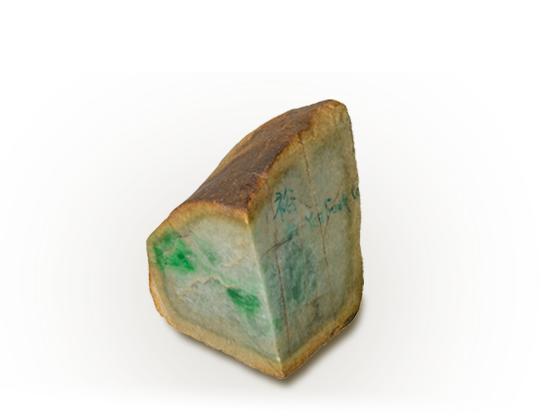OVERVIEW
Jade has its cultural roots in the smoke-dimmed caves and huts that sheltered prehistoric humans. Around the world, Stone Age workers shaped this toughest of gems into weapons, tools, ornaments, and ritual objects. Their carvings invoked the powers of heaven and earth and mystic forces of life and death.
Two different gem materials can correctly be called jade. Jadeite is one of them, and the other is nephrite. Both are actually metamorphic rocks made up of tiny interlocking mineral crystals. These interlocking crystals make both gems exceptionally tough. Jadeite comes in a wide range of attractive colors: Many shades of green, yellow, and reddish orange, plus white, gray, black, brown, and lavender (often a light purple or light grayish violet color). The coloration is often streaked or mottled, giving jadeite gemstones an interesting visual texture that carvers can use to create imaginative and intriguing effects.
Nephrite is also accepted as jade in the international gem and jewelry industry. It ranges from translucent to opaque and can be light to dark green, yellow, brown, black, gray, or white. Its colors tend to be more muted than jadeite’s, and they’re often mottled or streaked.
Modern gemologists use the word “jade” as a generic term for both nephrite and jadeite. These gems have been linked throughout history. In fact, the term jade has also been applied to a number of gems and ornamental materials that resemble jade, and even some manmade equivalents resembling jadeite and nephrite.
- Mineral: Jadeite and Nephrite
- Chemistry: NaAlSi2O6 and Ca2(Mg,Fe)5Si8O22(OH)2
- Color: Green, white, orange, yellow, lavender, black
- Refractive index: 1.666 to 1.680 (+/-0.008) and 1.606 to 1.632 (+0.009, 0.006)
- Birefringence: Usually not detectable
- Specific gravity: 3.34 and 2.95
- Mohs Hardness: 6.5 to 7 and 6.0 to 6.5
BIRTHSTONE
HISTORY
Jade has been cherished for thousands of years. It’s considered pure and enduring enough to inspire the wearer’s highest spiritual aspirations, yet sensuous and luxurious enough to satisfy down-to-earth cravings. Asian consumers have never lost their fascination for jade, and today, non-Asian buyers are drawn to jade as never before. All are attracted by its rich heritage as much as by its beauty, durability, and rarity.
Nephrite jade has its cultural roots in the smoke-dimmed caves and huts that sheltered prehistoric humans. In China, Europe, and elsewhere around the world, Stone Age workers shaped this toughest of minerals into weapons, tools, ornaments, and ritual objects. Their carvings invoked the powers of heaven and earth and mystic forces of life and death.
The ancient relationship between this gemstone and humanity persisted into modern times among native societies in New Zealand and parts of North America. In China it evolved into an artistic tradition that has flourished for more than 3,000 years.
In Central America, the Mayans and the Aztecs prized jadeite jade. They used it for medicinal purposes as well as for jewelry, ornaments, and religious artifacts. The name jade comes from the Spanish expression piedra de ijada—literally “stone of the pain in the side.” Early Spanish explorers named it after they saw natives holding pieces of the stone to their sides to cure or relieve various aches and pains. Jadeite also symbolizes prosperity, success, and good luck.
It was in China—where the gem-carving tradition was already thousands of years old—that jadeite reached its peak as an important artistic medium. The first jadeite reached China from Burma (now known as Myanmar) in the late 1700s, and late eighteenth and early nineteenth century carvers created masterpieces that are still unsurpassed in concept, design, and technical execution. The Chinese associate jade with clarity of mind and purity of spirit.
Source of Content : www.gia.edu


